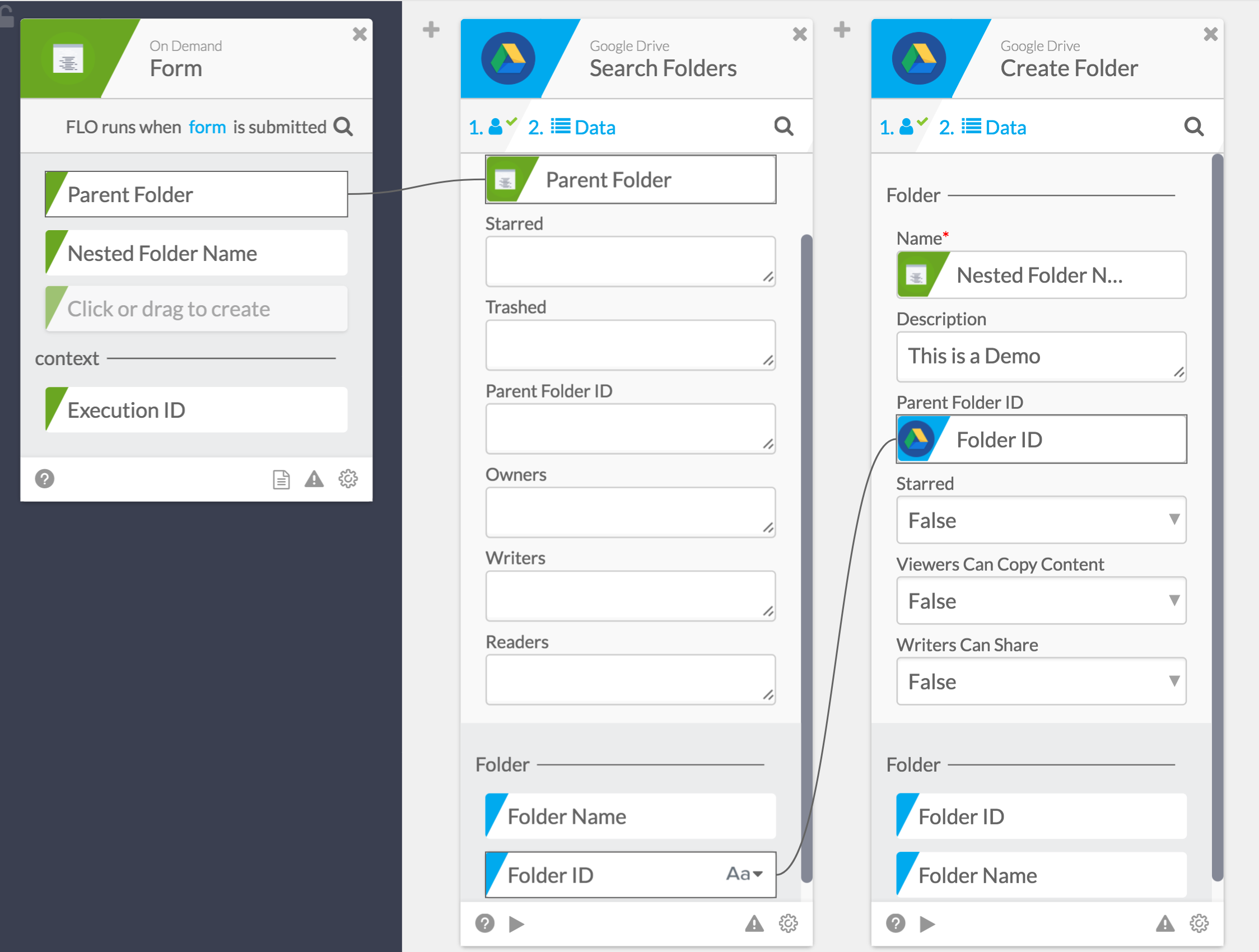This event trigger will fire when a new file is created inside of GoogleDrive or added to GoogleDrive.
Setup
The first step to using this card is selecting the folder to watch for new files created. There are two ways to pick a folder:
- Select a Folder Name from the Drop Down Menu
- Create the folder in Google Drive and give it a name.
- Create the File Created card for Google Drive in Azuqua.
- Scroll search and select the folder name.
- Leave the Folder ID field blank.
- Input the Folder ID
- Create the folder in Google Drive.
- Navigate to the folder in Google Drive.
- Copy the Folder ID found in the URL. This is everything that comes after “folder/” in the URL. For example, if the URL was “https://drive.google.com/drive/folders/1dyUEebJaFnWa3Z4n0BFMVAXQ7mfUH11g”, then the Folder ID would be “1dyUEebJaFnWa3Z4n0BFMVAXQ7mfUH11g”.
- Create the File Created card for Google Drive in Azuqua.
- Select “-- Use Folder ID --” for the Folder option.
- Input the Folder ID from Google Drive into the Folder ID field in Azuqua.
Output Fields
File
- File Name(text): Name of the file.
- File ID (text): Unique ID of the file.
- Folder (list): Option to select folder to insert file in.
- Description (text): Description of the file.
- Starred(True/False):
- True (text): A file has a “Starred” label applied to it.
- False (text): A file does not have a “Starred” label applied to it.
- Parent Item ID (list): Provides a list output for all of the parent folders inside of which the file that created this workflow exists.
- Version (text): A monotonically increasing version number for the file. This reflects every change made to the file on the server, even those not visible to the requesting user.
- Web View Link (URL): Url directly to the link that will pull up the folder inside GoogleDrive.
- Thumbnail Link (URL): A short-lived link to the file’s thumbnail. Typically lasts on the order of hours.
- Created Time(date - iso format): Date when the File was created.
- Modified Time (date - iso format): Date when the File was last modified.
- Last Modified User (text): Name of the user who last modified the file.
Permissions
- Shared (true/false): whether the file is shared and accessible or not.
- Owner (text): Name of the person who owns the file.
- Editors (list): List of names of people who have edit access to the file.
- Viewers (list): List of names of people who have viewer access to the file.
- Commenters (list): List of names of people who have comment access to the file.
- Allow File Discovery (true/false): whether the file is discoverable or not via search inside GoogleDrive.
- Writers Can Share (true/false): whether the people with write access can share the file.
- Viewers Can Copy Content (true/false): whether views can download, print, and copy this file.

